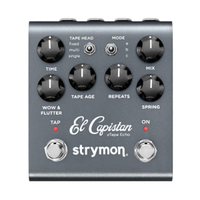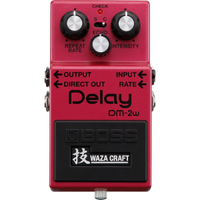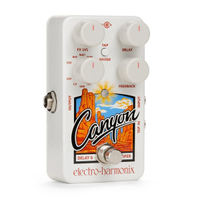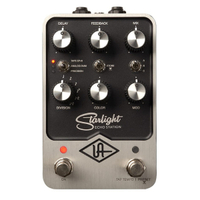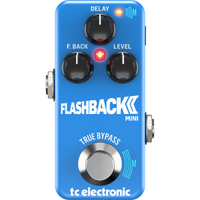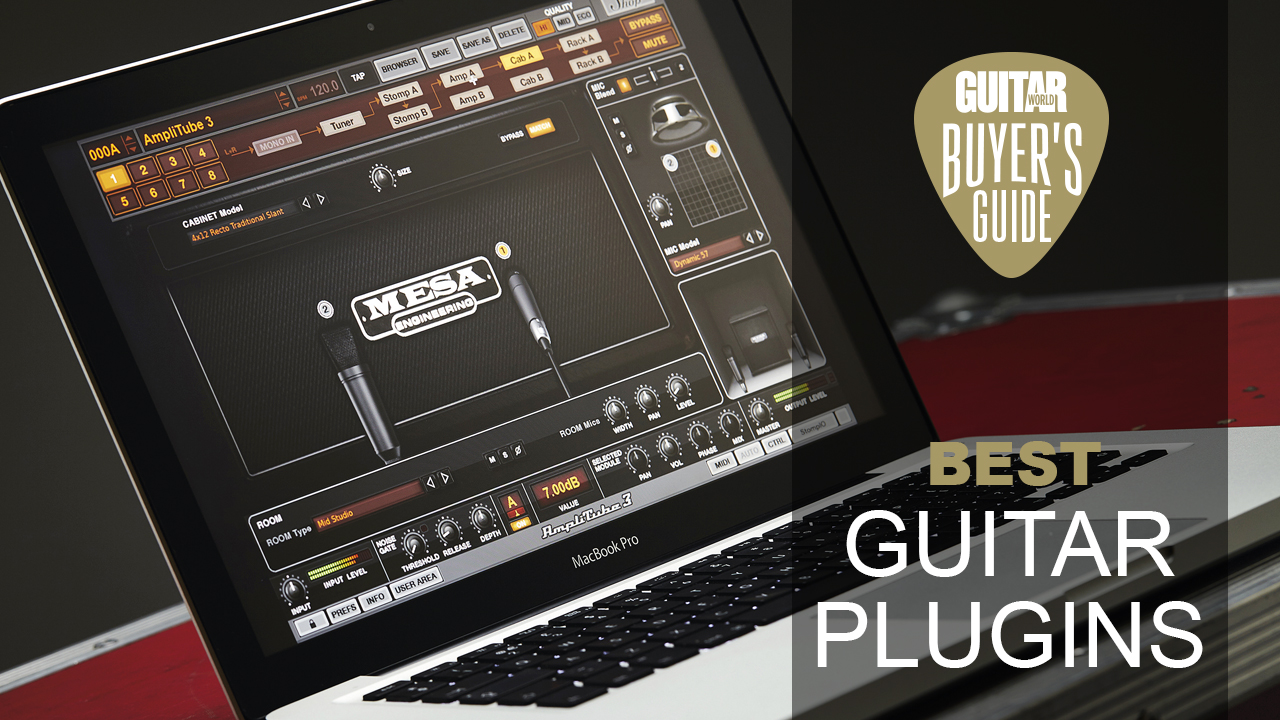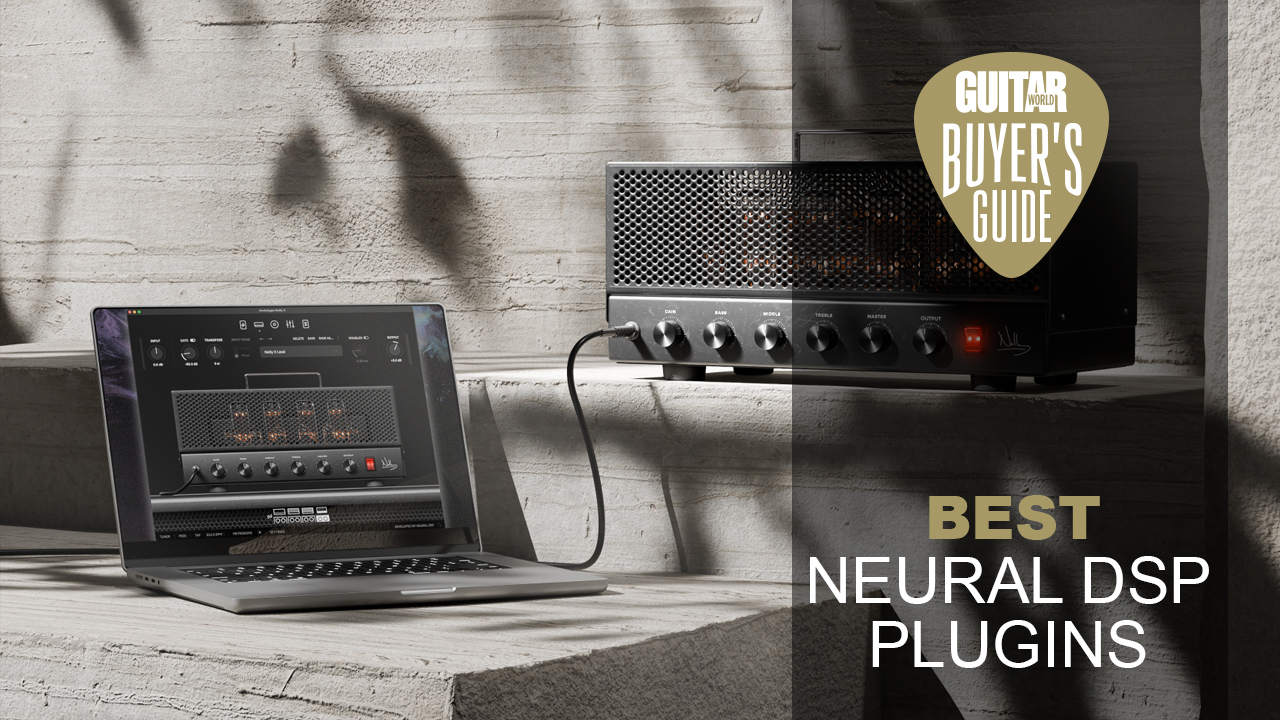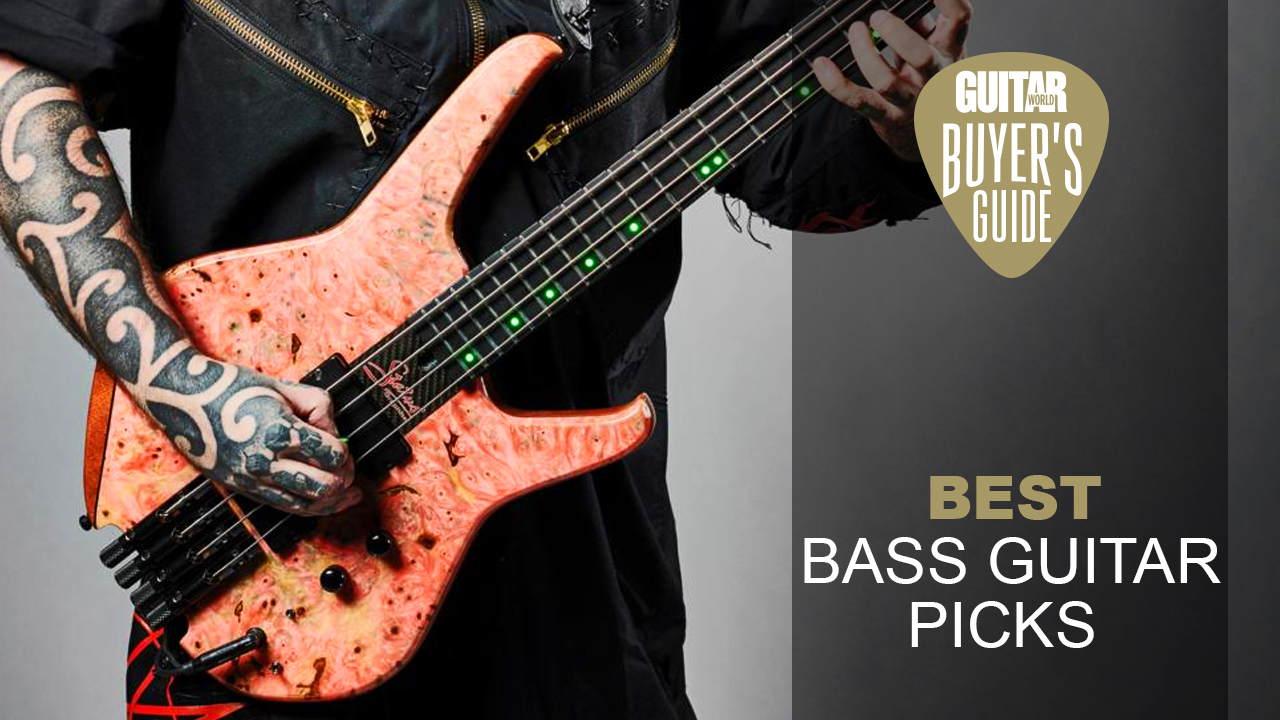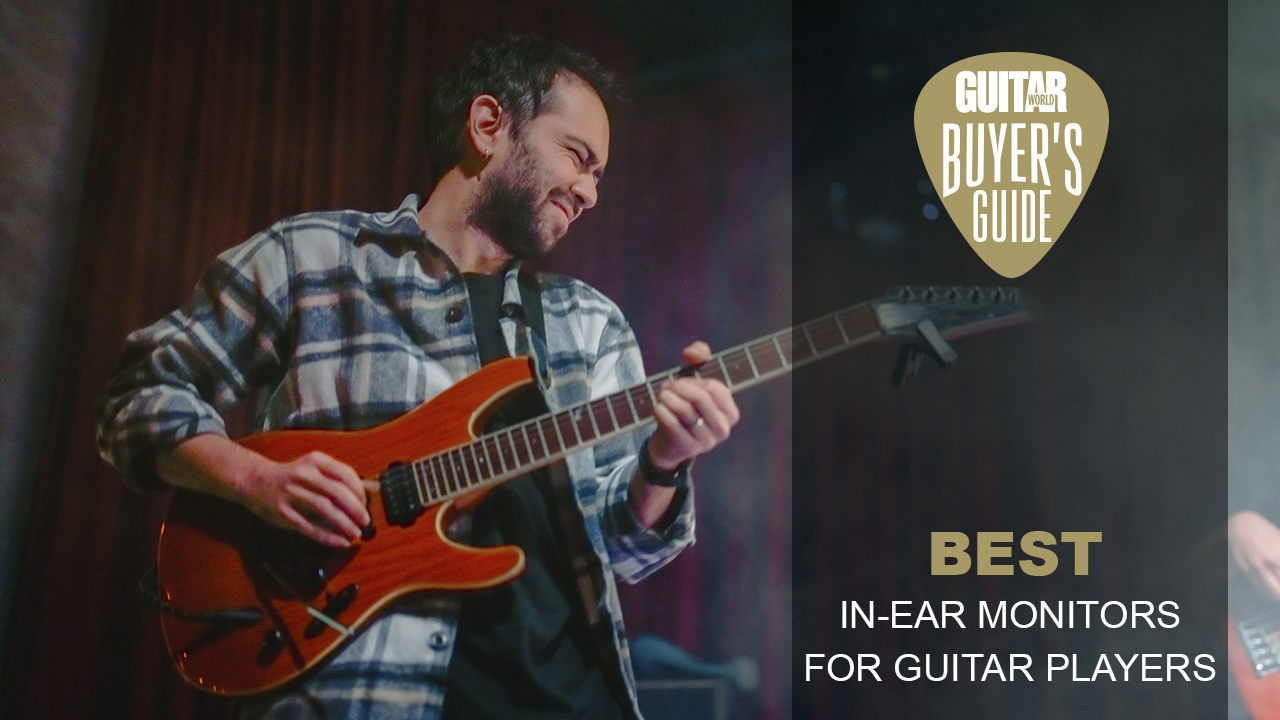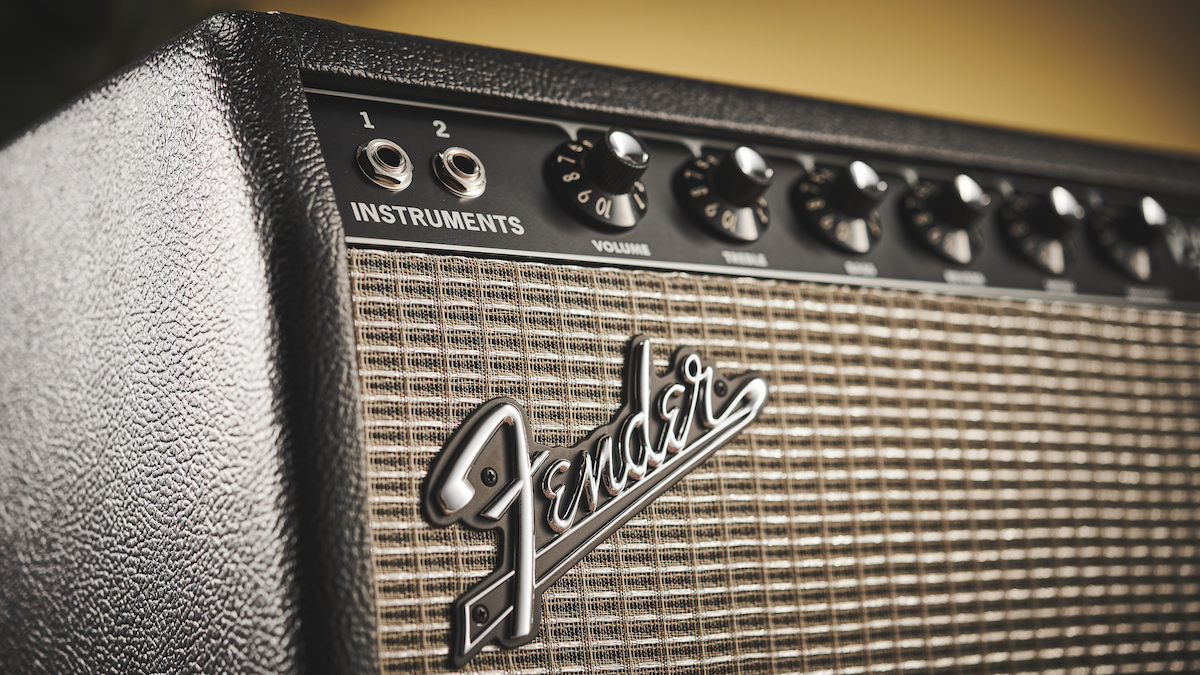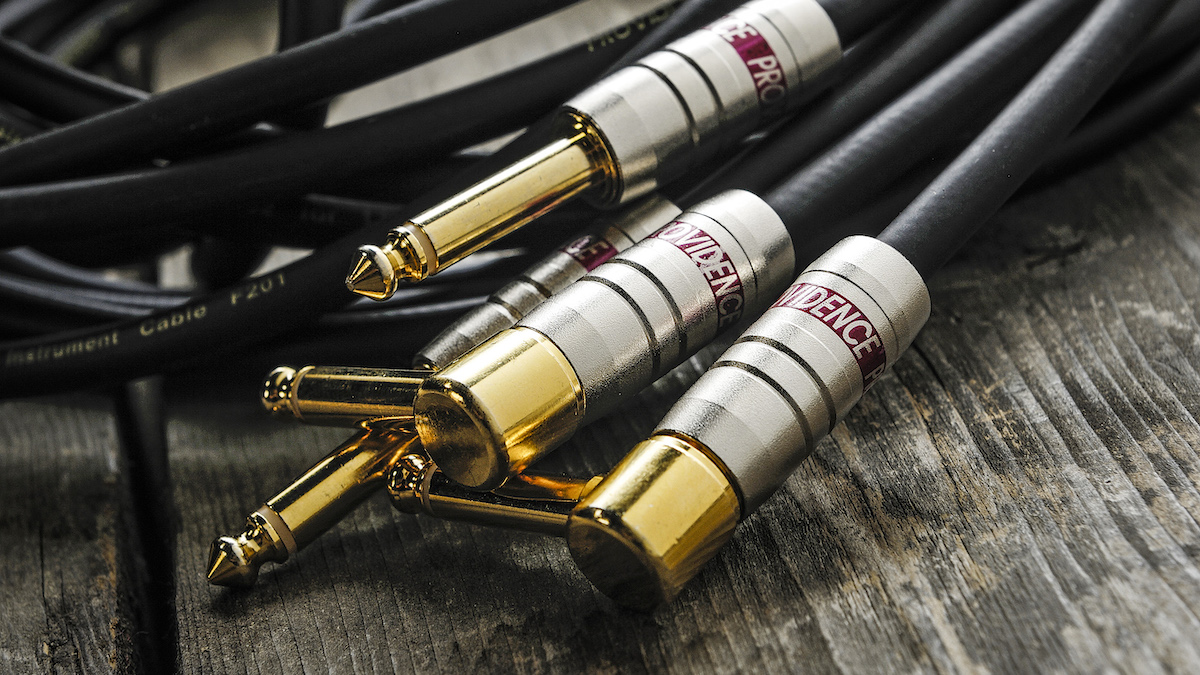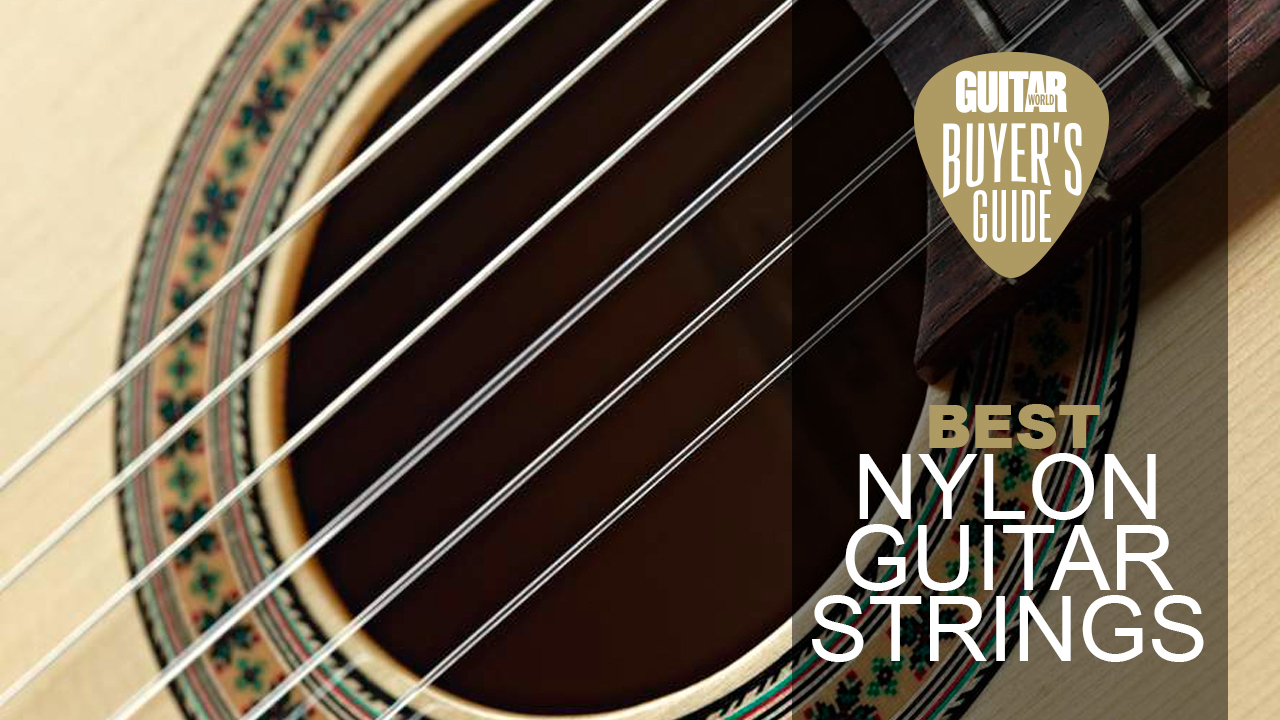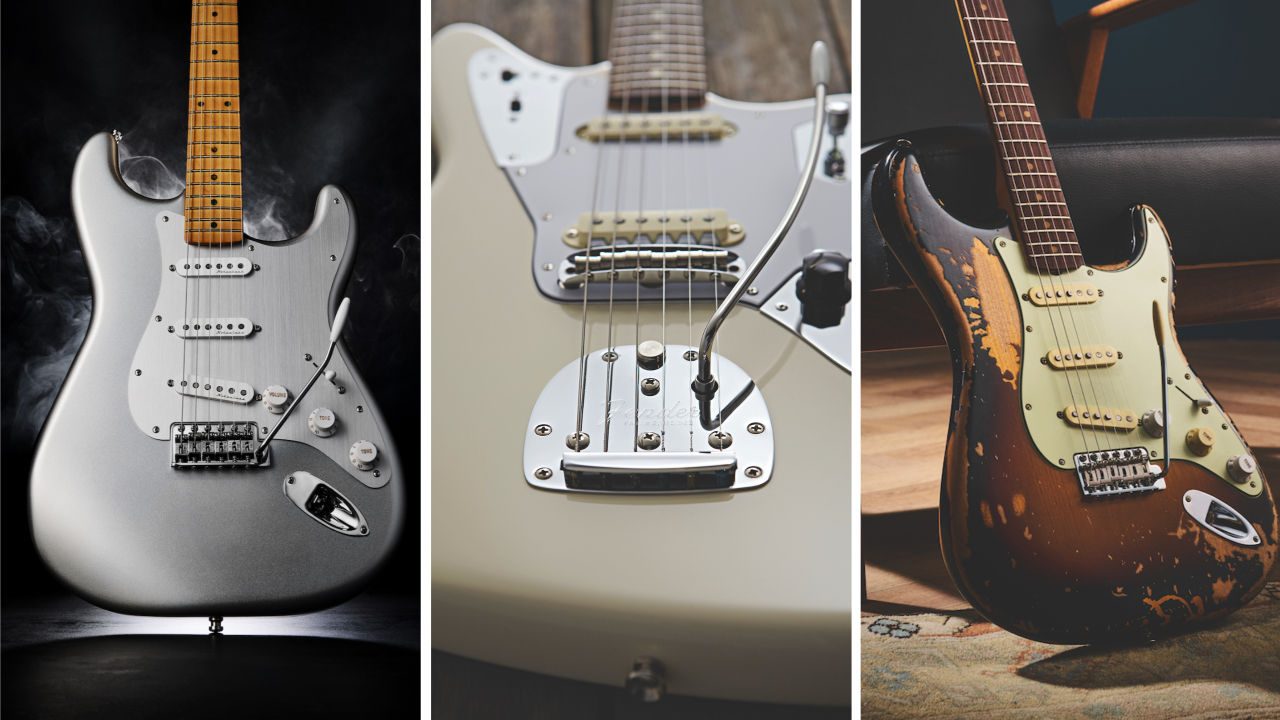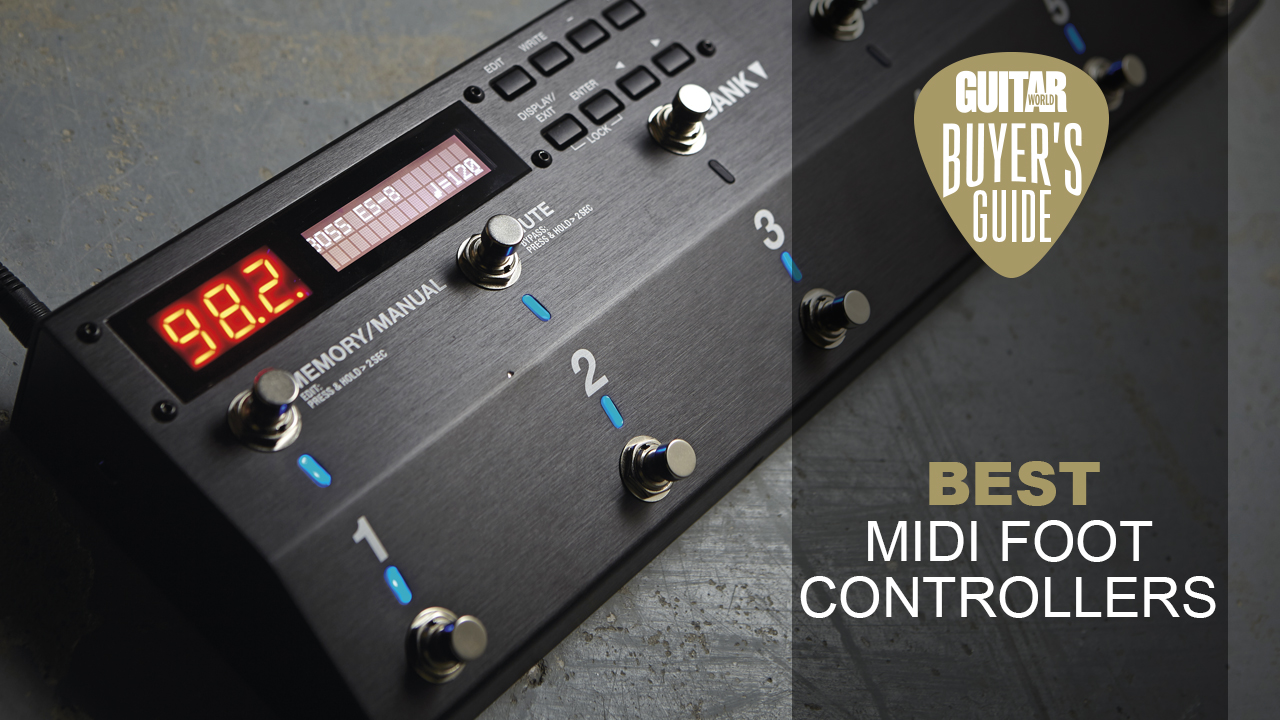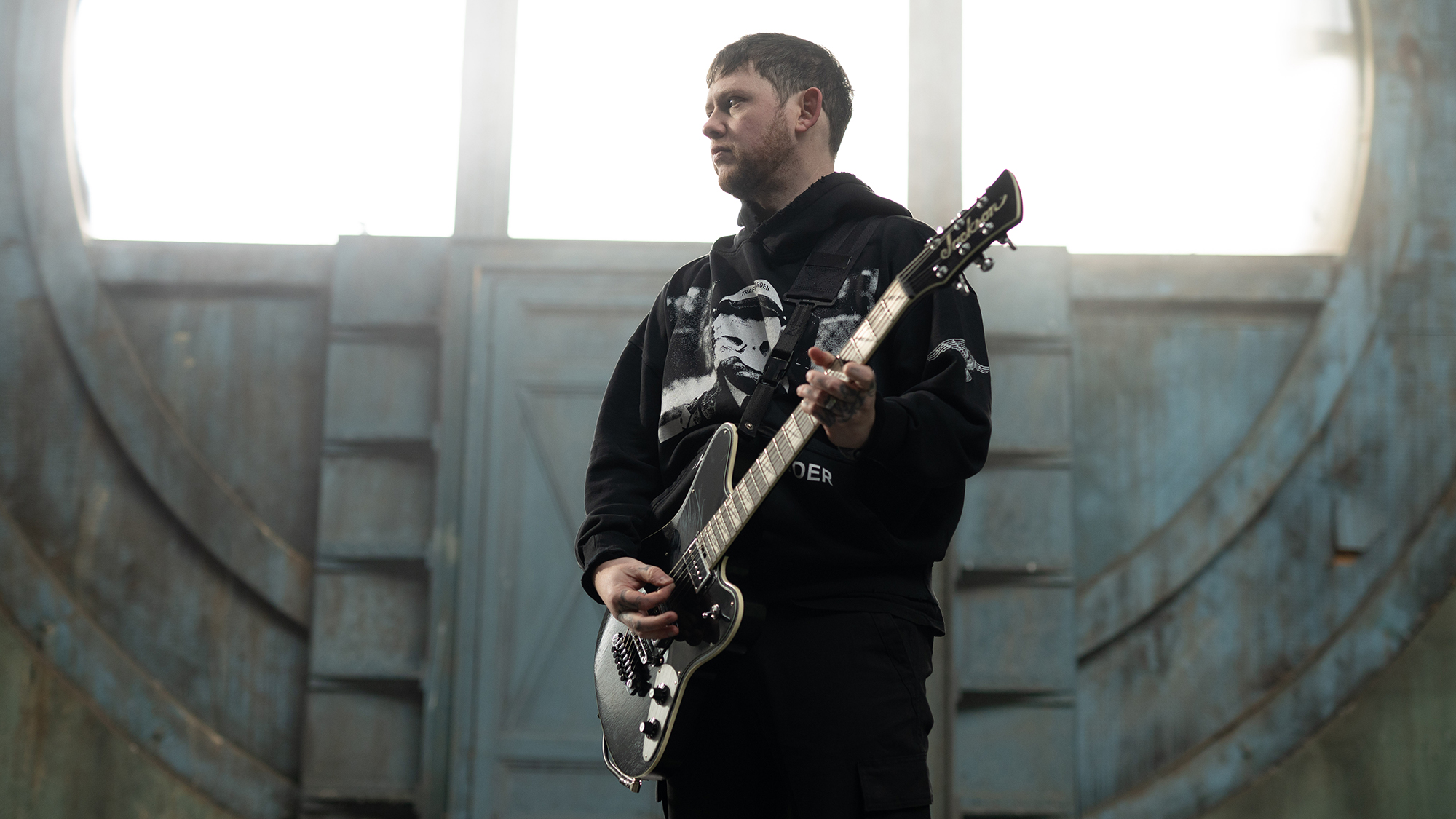Best delay pedals 2025: our pick of the coolest delay pedals for your pedalboard
Whether you prefer digital or analog delay pedals, the options in this round-up will help boost your creativity on the guitar
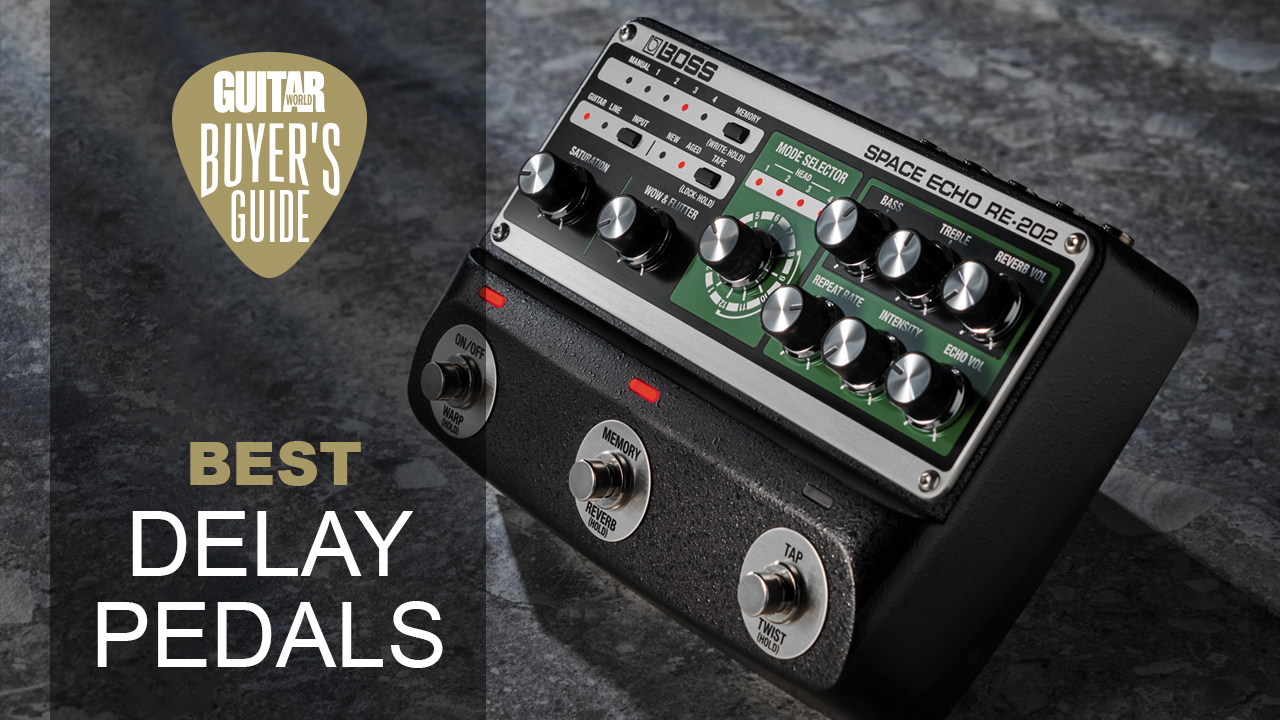
Whether you're looking to subtly thicken your guitar tone, or send it to the exosphere, our pick of the best delay pedals will get you there. Pretty much every guitarist in the world has a delay on their 'board in one form or another, and that's because it's a hugely versatile effect that can play a lot of different roles.
Music from the likes of U2, Radiohead, Rage Against The Machine, Muse, Guns N Roses, and loads more just wouldn’t be the same without a delay pedal. You can use it subtly just to widen your guitar sound slightly, or you crank up the repeats and the level for more extreme sounds. Delay will also really bring your lead guitar parts to life, taking away some of the harshness treble notes deliver and adding a sense of space to single notes.
For us, the coolest delay pedal on the market right now is the Line 6 DL4 MKII. Not only does it contain a massive 30 sounds that range from vintage to modern, but it also features reverb patches and a built-in looper. If the DL4 sounds a little overwhelming to you, then check out the Boss DD-3T, which is incredibly versatile and one of the most popular delay pedals of all time.
If you want to learn more about delay we've got a helpful comparison of analog and digital delays that will get you pointed in the right direction. We've also put together answers to some key questions in our FAQs section for those who want to learn more.
Our top picks
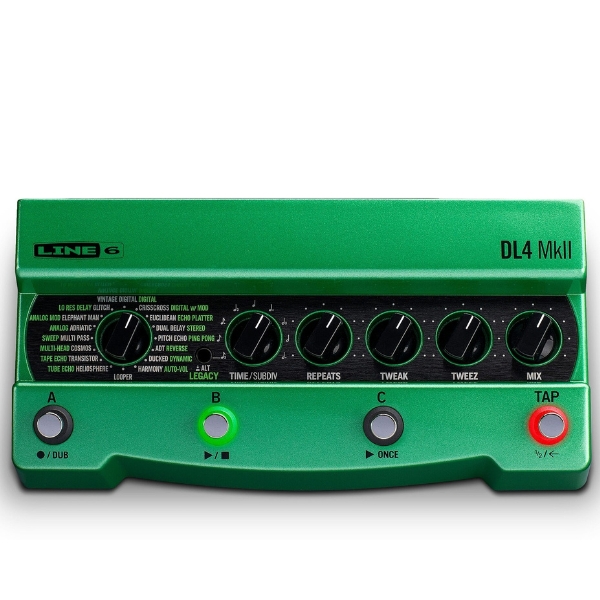
The original DL4 is pretty much the sound of the noughties, and the Line 6 DL4 MkII takes everything that was great about the original and turns everything up a notch.
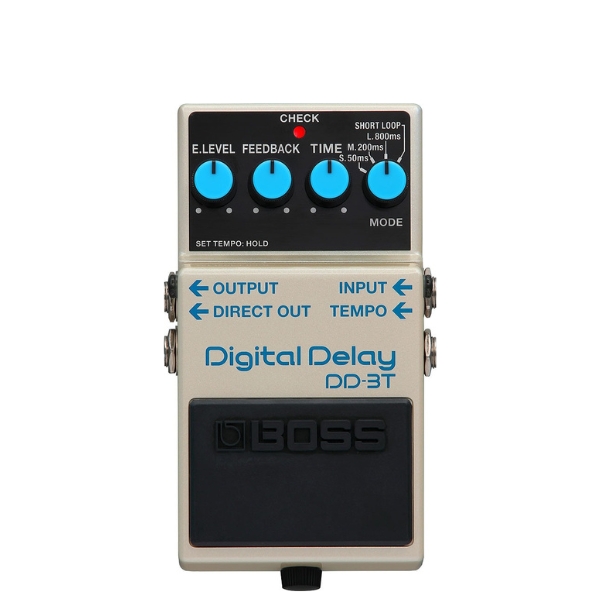
An update to arguably the most popular delay pedal ever made, the Boss DD-3T is an icon of the stompbox world and still one of the best delay pedals money can buy.
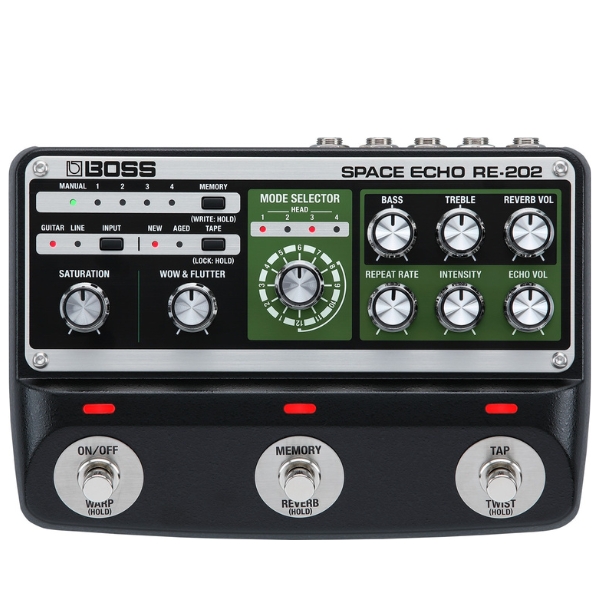
Based upon one of the all-time classic delay machines, the Boss RE-202 Space Echo is one of the best tape delay emulations we've ever heard. Vintage tones packed with modern versatility.
Best overall
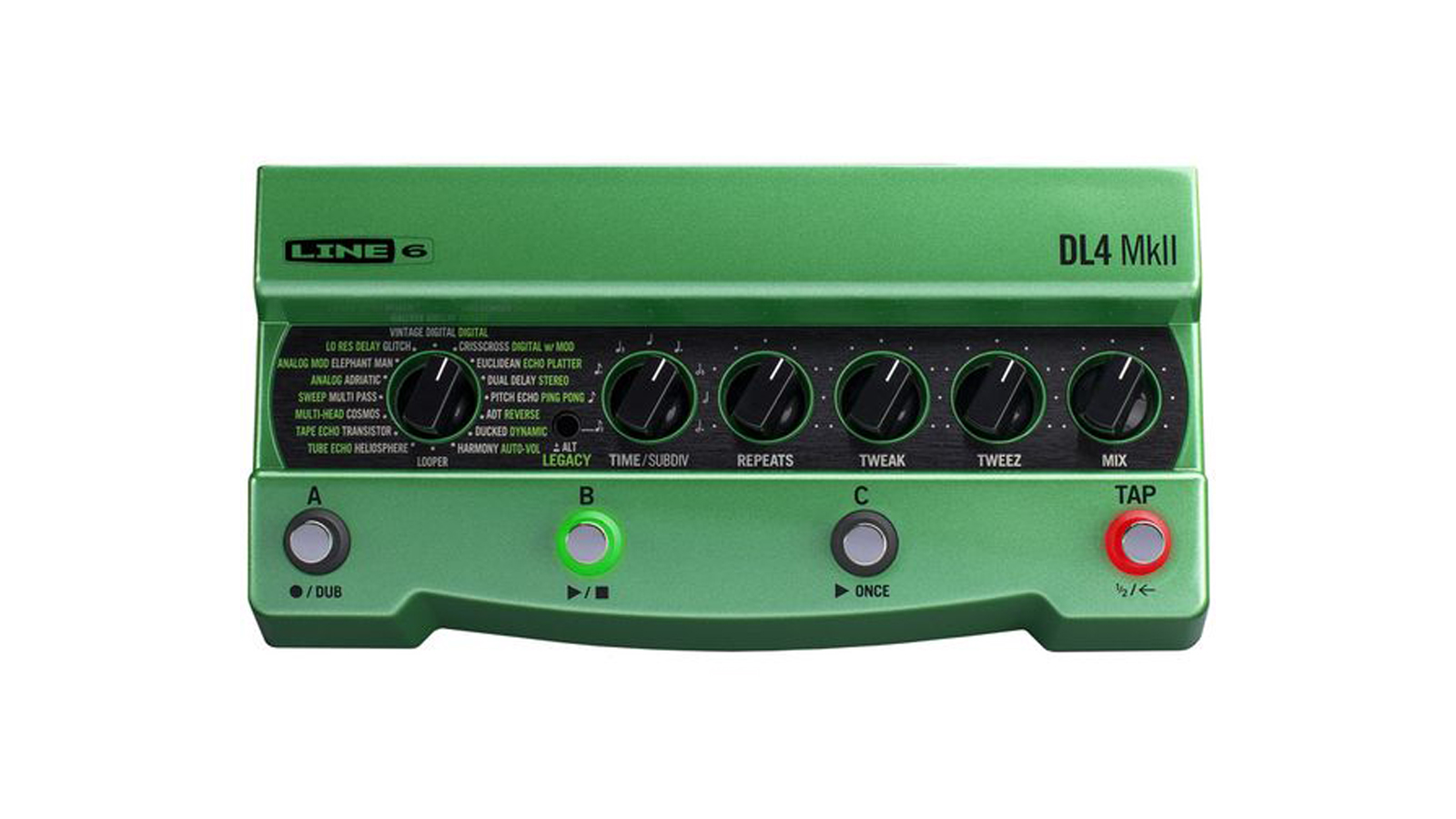
Specifications
Reasons to buy
Reasons to avoid
✅Buy if you want the ultimate selection of delays: Packed to the brims with different delay tones, plus a whole suite of reverb tones, the DL4 is a who's who of classic and modern delay sounds.
❌Avoid if you want simplicity: You might not need a million different delay tones, in which case the DL4 will almost certainly be overkill.
At this point, you could probably call the original Line 6 DL4 a classic pedal. This rather giant delay pedal changed many players' perceptions of digital stompboxes and turned the entire pedal world on its head.
With the original being released way back in 2000, we were well overdue for an upgrade - enter the Line 6 DL4 MKII. This newly updated - and shrunken down - delay unit most definitely meets our expectations, delivering the traditional delays we've all come to know and love with a few valuable extras.
The DL4 MkII comes fully loaded with 15 MKII delay sounds as well as 15 Legacy settings. Better yet, you even get an expanded internal memory that allows the looper to record 120 seconds in mono or 60 seconds in stereo! If that's not enough for you, you also get some high-quality reverb sounds thrown into the mix, essentially making it three pedals in one.
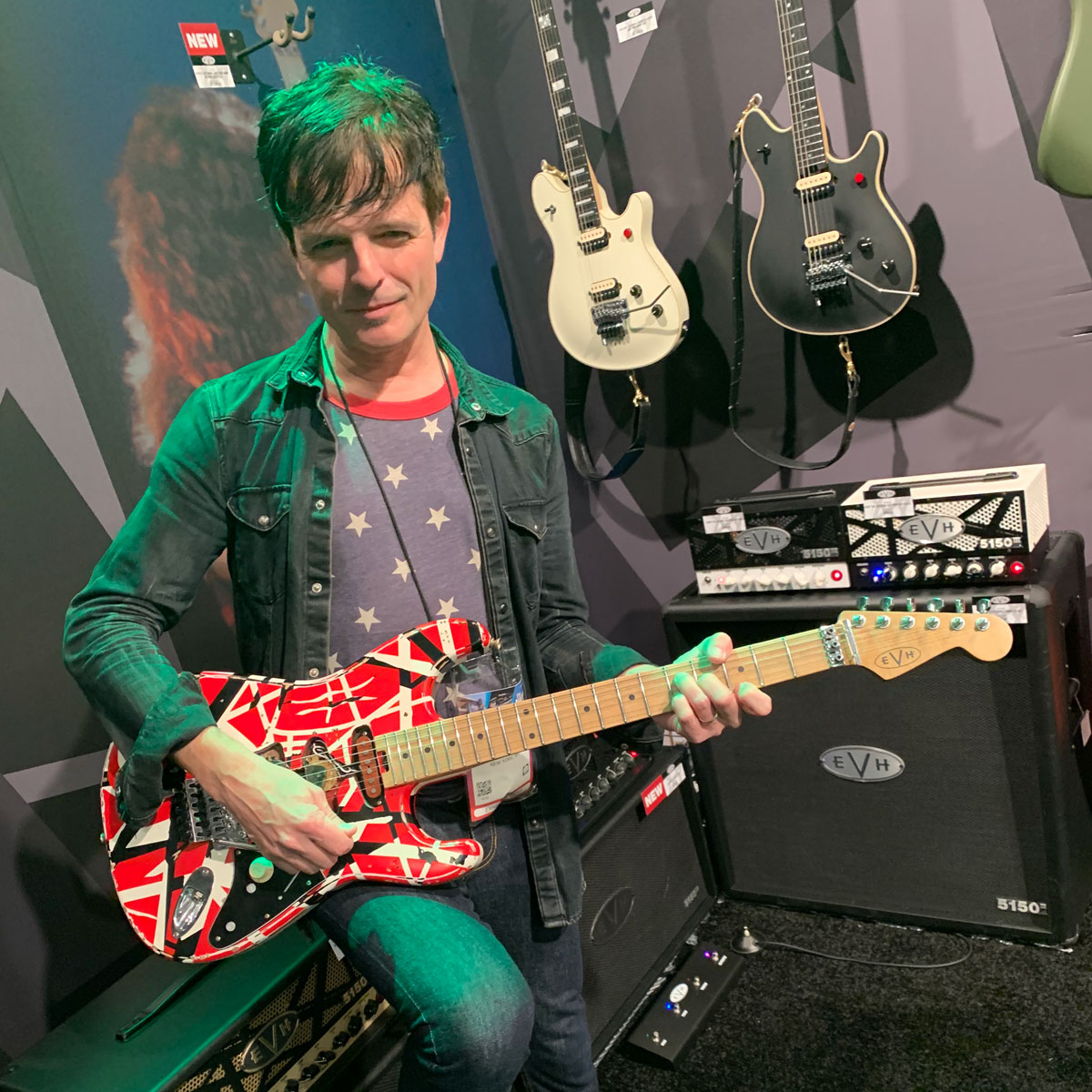
"Major kudos go to Line 6 for preserving the core of the DL4’s intuitiveness and widespread appeal in the MkII – whereby the simple joy of rotating knobs and hitting footswitches unleashes a multitude of delay textures without the fiddly nuisance of LED screens or display menus."
Read more: Line 6 DL4 MKII review
Best digital delay
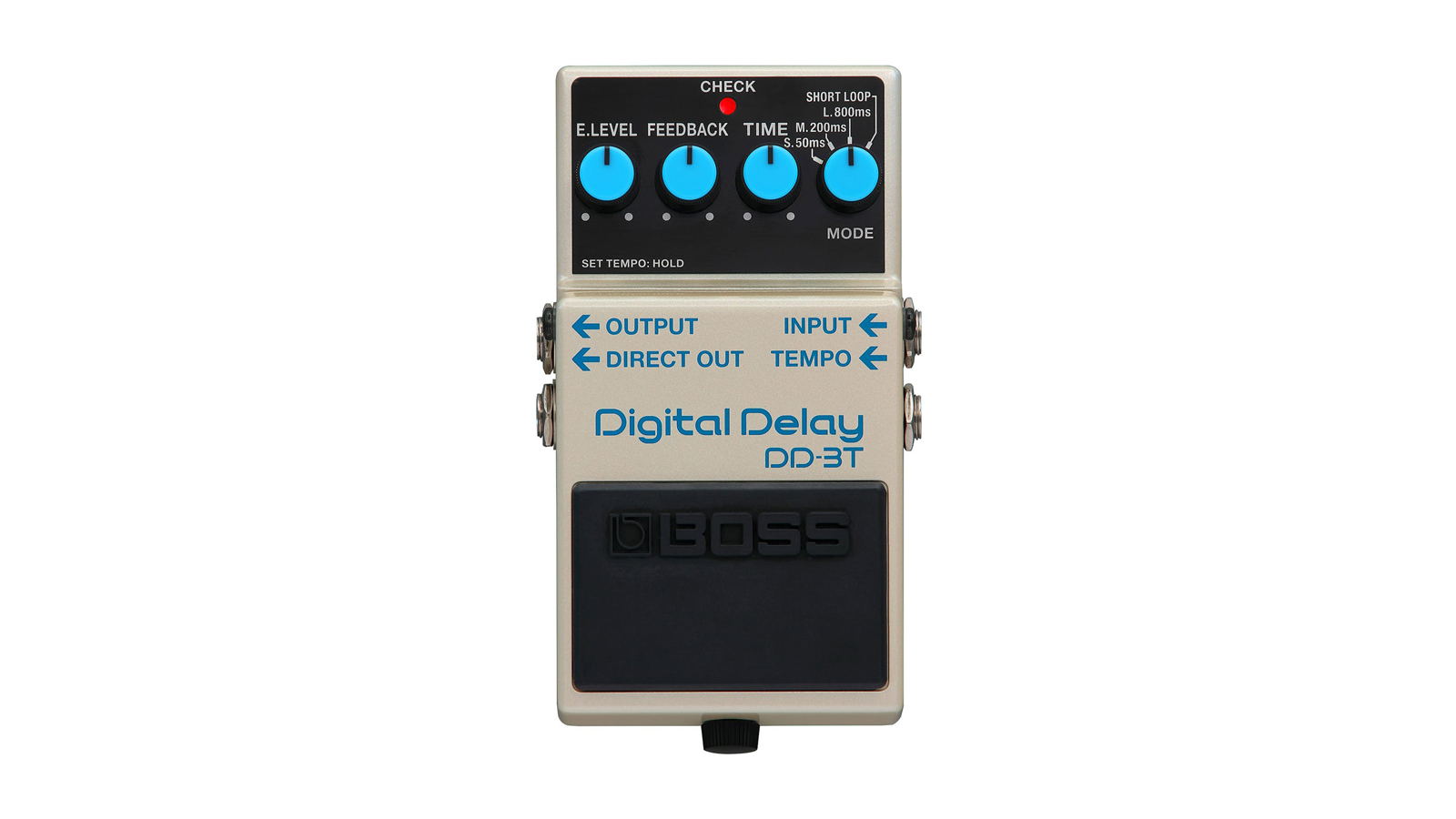
2. Boss DD-3T
Our expert review:
Specifications
Reasons to buy
Reasons to avoid
✅Buy if you want simple digital delay tones: Still regularly used by pro guitarists, this updated version of the iconic Boss DD-3 adds in a tap tempo and rearranges the outputs to make it much easier to use.
❌Avoid if you want lots of choice: The DD-3T does it's sound really well, but it's still just one sound so look elsewhere if you want more variety in your delay tones.
The Boss DD-3 has been the staple digital delay for 30 years, and the reason is no secret - it simply sounds amazing. Pristine delays, a pleasant overall timbre, and an EQ profile that works equally well in a band context or studio mix, make this a no-brainer for everybody from bedroom musicians to pros.
With the latest update, Boss has improved the base functionality of the DD-3 by adding a tap-tempo input, allowing you to use an external tap source to control the delay time. This allows you to get your delays in time with the rest of the band on the fly. They've also changed the position of the direct output jack, moving it to the left-hand side which makes a lot more sense.
Apart from that little else has changed with the actual sound and look of the DD-3T. It still features delay times in ms with 50, 200, 800, and a shot loop setting. The level, feedback, and time knobs are exactly the same too. It's very much an 'if it ain't broke...' type deal, and with the Boss DD-3 still appearing on pedalboards even now, Boss doesn't need to change it all that much.
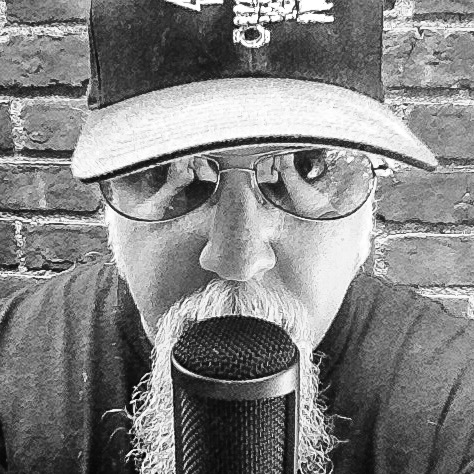
"The DD-3T provides the exact same beloved sound quality that made the DD-2/DD-3 such a perennial favorite with so many gifted guitarists for the last 37 years or so. With new features plus the more logical configuration of the output and direct out jacks on the same side, the DD-3T is a worthy replacement for the DD-3 that will keep its legacy going strong for decades to come."
Read more: Boss DD-3T review
Best tape delay
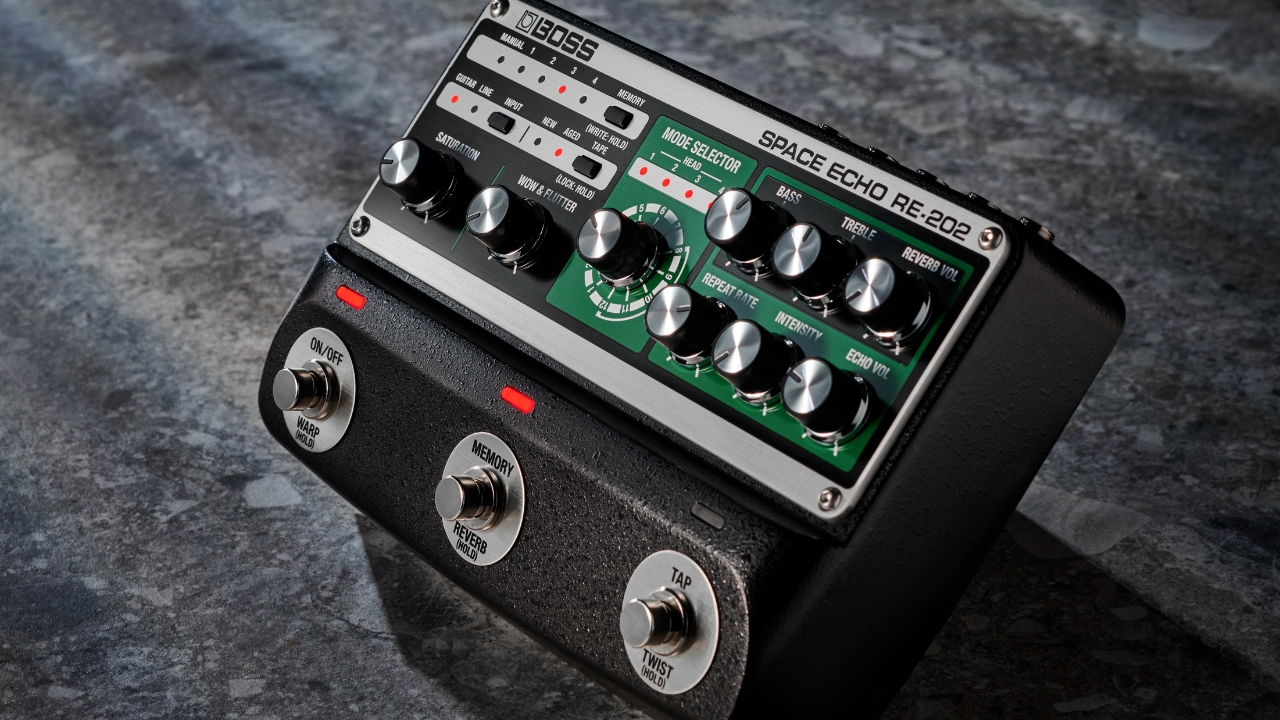
Specifications
Reasons to buy
Reasons to avoid
✅Buy if you want iconic tape tails: Based on the classic delay unit, the RE-202 gives you vintage delay sounds aplenty with the usability of a modern digital delay pedal.
❌Avoid if you like modern sounds: As it's based on an old recording unit, this won't do pristine, clean digital delay sounds.
Based upon one of the legendary delay machines of music history, the Boss RE-202 Space Echo gives guitarists the sound of a Roland RE-201 in a compact form, minus any of the associated hardware maintenance costs. Carefully constructed using a pristine, original RE-201, this incredible tape delay is about as close as most of us will get to the real deal.
One of the things that draws guitarists to tape delays is the organic and sometimes unpredictable sounds it can create. Whereas with the original tape machine, you’d be at the mercy of its idiosyncrasies, with the RE-202 you have full control over the Wow, Flutter, and saturation sounds, as well as the ability to adjust the individual tape heads - something not possible with the original.
What it adds up to is probably the most accurate Space Echo sound we’ve ever heard, and undeniably one of the best tape delay pedals going. There’s loads of connectivity too, so you can use an expression pedal to control parameters, including the famous feedback into oscillation. It runs in stereo or mono and features MIDI control too.

"Boss has got this just right: the RE-202 accurately reproduces Space Echo sound while going way beyond the capabilities of an original Roland RE-201. If you’ve ever wished to have a Space Echo in your rig but thought it impractical, now you can do it with total confidence."
Read more: Boss RE-202 Space Echo review
Best analog delay
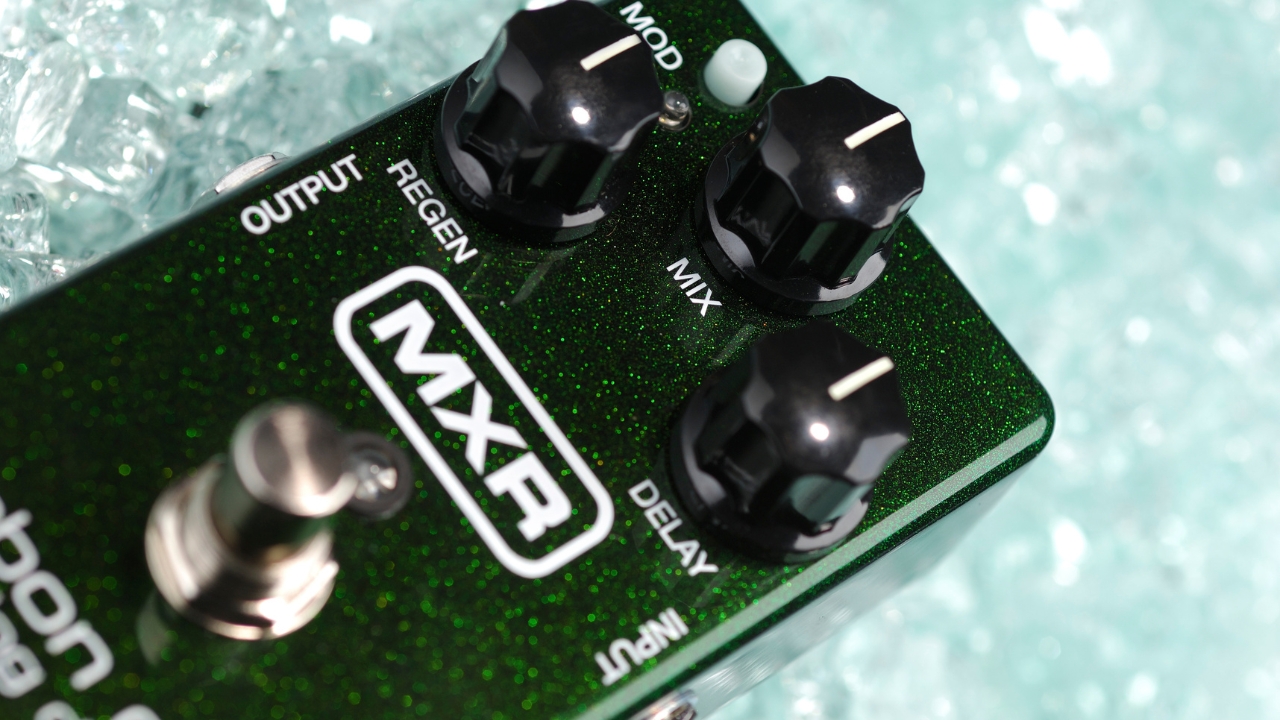
4. MXR Carbon Copy
Our expert review:
Specifications
Reasons to buy
Reasons to avoid
✅Buy if you want analog delay: With its warm, lush-sounding delay tails, the Carbon Copy is one of the most popular analog delays around.
❌Avoid if you like bright tones: The Carbon Copy is a pretty dark-sounding pedal, so if you want bright, cutting delays you should look elsewhere.
With its gorgeous built-in modulation, the MXR Carbon Copy is a superbly distinctive-sounding pedal. Although it shines when used for a variety of different uses, it's probably most at home in the shoegaze, dream pop, and ambient genres, even cropping up on a lot of post-rock guitarists' pedalboards.
As you'd expect, it's a heavy hitter on its own, but it also stacks well with other delays and creates gorgeous pad-like echoes when put after a drive. It does feature a bright switch to add more high-end to the tone, but it's still on the darker side compared to other digital delay pedals.
Push the mod-switch and you'll get some absolutely amazing sounds, adding a chorus pedal-like tone to your delay tails. It's sparkly yet thick, great for fattening up your tone when used in a quick, slapback style setting, or for getting seriously ambient with a longer delay time and more repeats.

"It has all the lovely analog warmth in its cloud-soft repeats that breathe dimension to your guitar tone, especially in the Bright voicing. In its original mode, the CC Mini mimics the darkly textured repeats of the Carbon Copy, which many players love - including me - that adds a shroud of ambiance to solos and pick chug."
Read more: MXR Carbon Copy Mini review
Best for gigging
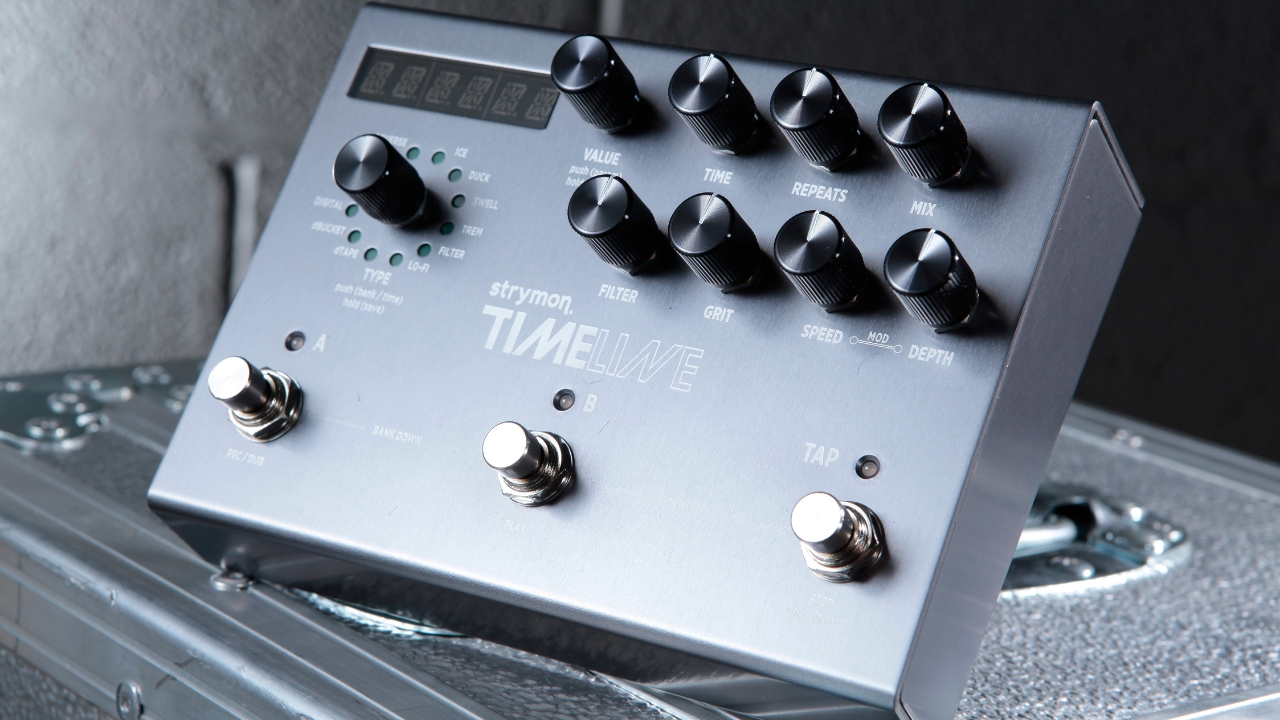
5. Strymon Timeline
Our expert review:
Specifications
Reasons to buy
Reasons to avoid
✅Buy if you want a delay pedal for gigging: Packed full of high-quality delay tones and in-depth functionality, the Timeline is a modern legend on the gigging circuit.
❌Avoid if you value simplicity: There's a lot to unpack here, so you're probably best off avoiding this if you like things simple.
The Strymon Timeline was the first big-box delay to offer truly studio-grade tone, with a range of excellent patches and signal processing that could go toe-to-toe with studio rack delay units. It's now become a stone-cold modern classic, and is our top pick if you're looking for a tour-ready delay pedal.
The user interface is slick, with plenty of options accessible on the front panel, but it has to be said that firmware updates to some of its competitors have left it somewhat behind in power-user features that are accessible to the menu-diving obsessives on units such as the DD-500.
You'll spot the Timeline appearing on a huge array of pro guitarists' pedalboards on the gigging circuit, thanks to the excellent quality and huge depth of tweaking available. If your main concern is the highest quality sounds possible, with the simplest interface, it's hard to argue against the Timeline.
Best budget option
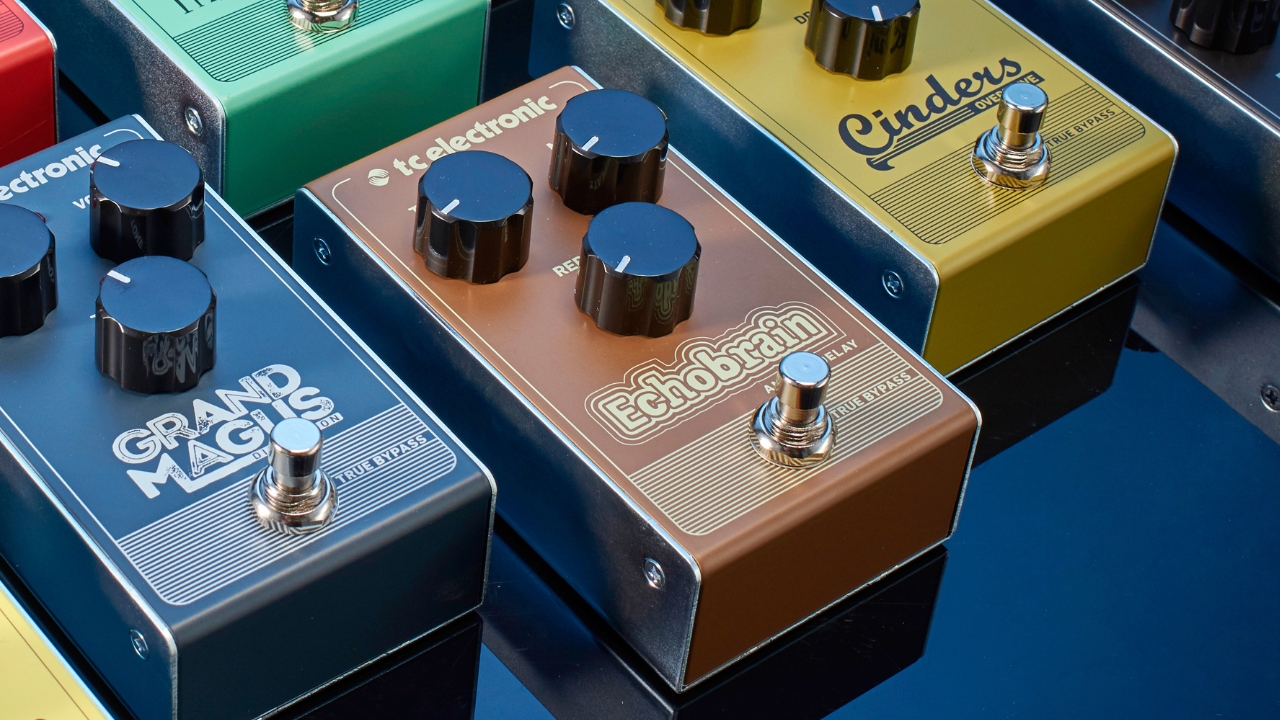
6. TC Electronic Echobrain
Our expert review:
Specifications
Reasons to buy
Reasons to avoid
✅Buy if you want vintage delay tones on a budget: This analog delay pedal is an absolute steal at below the $50 mark, delivering classic tape tones for much less than others on this list.
❌Avoid if you want lots of choice: This only does a single, analog-style delay tone, so you'll want to look elsewhere for more variety.
If you want the analog, BBD experience but don't want to pay a premium for the privilege, then the TC Electronic Echobrain is a brilliant budget delay pedal. Priced insanely competitively, like much of TC's offerings, you get a lot of pedal for your money here.
The sound here is very organic and one of the things that really impressed us was the level of flexibility in the knobs. From super-fast stuttering to infinite oscillation, there's a lot of expressivity available here. There's a lot of color in the repeats, great for psychedelic and lo-fi sounds.
The enclosure is a little larger than your typical Boss stompbox, but it's by no means huge. Top jacks make wiring it into your existing pedalboard a breeze and the only downside we could find was that the switch activates on release rather than your initial press down, which you can get around by replacing the switch or slightly adjusting your playing style.
Spec comparison
Here you'll find a direct specs comparison of all the pedals in this guide. This allows you to put each head to head on a series of key features, which should hopefully make it a little easier to choose between them.
| Model | Type | Bypass | Tap Tempo | Sounds |
|---|---|---|---|---|
| Line 6 DL4 MKII | Digital | Buffered | Yes | 30 |
| Boss DD-3T | Digital | Buffered | Yes | 1 |
| Boss RE-202 Space Echo | Digital | Buffered | Yes | 12 |
| MXR Carbon Copy | Analog | Buffered | No | 2 |
| Strymon Timeline | Digital | Buffered | Yes | 12 |
| TC Electronic Echobrain | Analog | Buffered | No | 1 |
Also consider
Here you'll find more of our favorite delay pedals. If you didn't find what you were looking for out of our top picks, don't worry there are still load of great options for you!
Strymon El Capistan V2
Digital | Buffered | 3 sounds
With several different tape-head options to emulate classic tape-echo units, as well as controls for wow, flutter, and tape age, the El Cap can do everything from a very clean, forward-sounding tape echo for use in clean pop, to a much grimier, darker echo tone ideal for ambient and shoegaze.
★★★★★
Read more: Strymon El Capistan V2 review
Boss DM-2W
Analog | Buffered | 2 sounds
The Boss DM-2 and DM-3 analog delays are, quite simply, among the best-sounding delay pedals ever made. So it came as little surprise that one of Boss's first targets for its boutique Waza craft range was the DM-2. With a glorious dark echo tone that works on record or live, and pairing excellently with other delays and drive pedals, the DM-2 is hours of fun, and can even be controlled via an expression pedal for added space-cadet madness.
★★★★½
Read more: Boss DM-2W review
Electro-Harmonix Canyon
Digital | Buffered | 11 sounds
With an array of patches covering everything from tape echo to shimmer and octave delays, the Electro-Harmonix Canyon is a solid choice if you want to cover a lot of ground. The overall voicing feels less 'studio' and pristine than some of the other units on this list, but it's a lot of fun to use and works for its intended use - inspiring your creativity as a player.
★★★★½
Read more: Electro-Harmonix Canyon review
Universal Audio Starlight
Digital | True & buffered bypass | 9 sounds
Boasting a dual processor design, the Starlight authentically replicates the sound and response of some of the most cherished delay hardware in the world, namely a 60s Echoplex, an old Deluxe Memory Man as well more pristine digital delays that have come from Universal Audio’s rich history of sound sculpting.
★★★★½
Read more: Universal Audio Starlight review
TC Electronic Flashback 2 Mini
Digital | Buffered | 8 sounds
The TC Flashback 2 Mini is an impressive piece of kit for the money. The sounds are solid, with a good range of user-tweakable options, and the delays themselves never stray into brittle territory, keeping a warm, organic timbre whatever the patch.
★★★★☆
Read more: TC Electronic Flashback 2 Mini review
Glossary
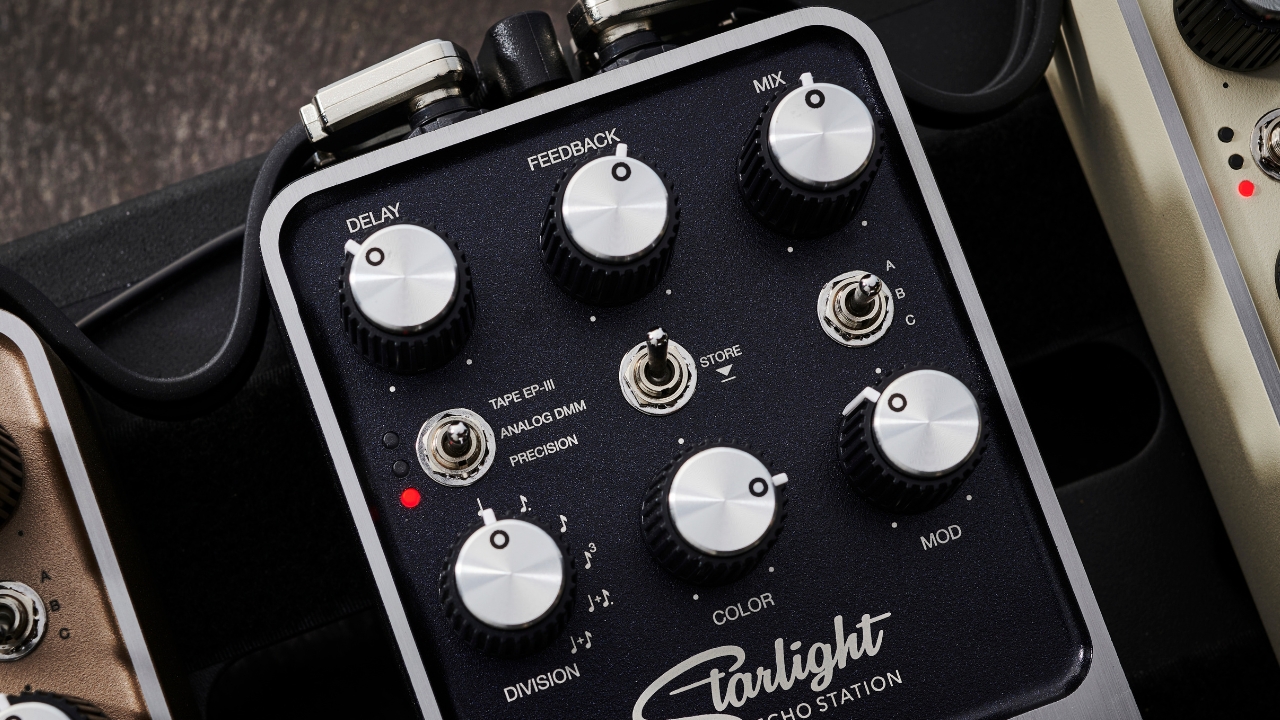
Confused by all the terminology around delay pedals? Our glossary of key terms will ensure you know your bucket brigade from your buffered bypass.
Analog delay - An analog delay pedal is one that uses analog circuitry to create its sounds. On a technical level, it continuously varies electrical signals to mimic a waveform, usually using a bucket brigade device.
Bucket brigade device (BBD) - a Bucket Brigade Device consists of multiple capacitors in a line. The signal passing through fills and then empties each of the capacitors, causing a slowdown in the signal which results in the delay tone you hear.
Buffered bypass - A buffered bypass strengthens the tone passing through your guitar pedal and pushes it through. This gives you a stronger signal when you've got long cable runs in your signal chain.
Digital delay - A digital delay imitates the process of an analog delay signal, using 1s and 0s to replicate a signal being passed through capacitors. The signal gets converted to digital going into the pedal, processed, and then converted back to analog as it leaves the pedal.
Feedback - Feedback in terms of delay pedals refers to the amount of repeats you hear after you play your note. A short feedback means you hear one note, whereas a long feedback setting gives you multiple repeats.
Repeats - On a delay pedal the repeat knob usually determines the amount of time between the delays you hear after you play a note. It's also often labeled as 'time' or 'rate'.
Tap tempo - A tap tempo allows you to manually set the delay time by tapping your foot to your preferred tempo. Useful when you're playing with a live band and playing faster or slower than the song's usual tempo.
Tape delay - A tape delay pedal emulates the vintage delays created by analog tape machines from the 60s and 70s. Tape delay results in a warmer and darker tonality with more compression and saturation.
Time - Another way to determine the space between your delay repeats. Also known as 'repeats' or 'rate'.
Wow & flutter - Wow and flutter are terms used to refer to the effect of age upon analog tape machines. As the parts of a tape machine get more worn, small pitch modulation effects happen resulting in unpredictable effects. Wow refers to low-frequency modulation whereas flutter is a less predictable modulation higher up the frequency range.
Analog or digital?
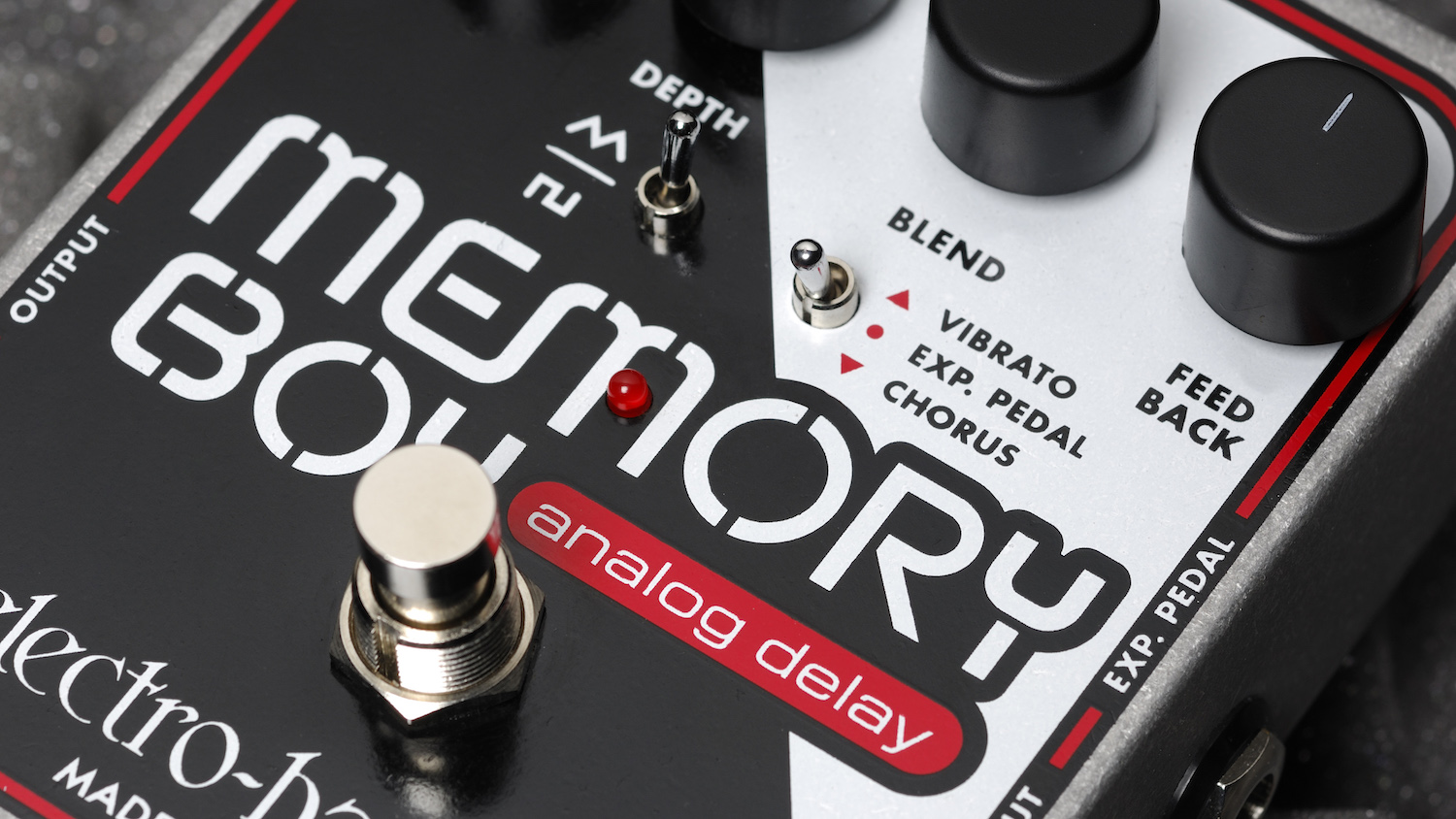
All delay pedals can be basically put into one of two categories – analog and digital. The first ever delay units used tape to replay the guitar signal – we’ve come a long way from there (though these do still exist), with analog delay pedals superseding these.
Analog delays utilize something called a bucket brigade chip. The guitar signal passes through the capacitors within this, which slows it down, or delays it. The sound is often referred to as dark, or lo-fi – your delayed guitar signal’s tone isn’t exactly the same as your dry tone. As you turn up the repeats, you’ll hear the tone slowly degrading, sometimes becoming more ‘warbley’. This unique sound is preferred by many players as it’s full of character. You can also get analog delay pedals to self-oscillate which can be really cool.
Digital delay pedals can replicate your guitar tone pristinely, as many times as you like. Some describe this as sterile sounding, but it’s really subjective and it’s whatever you like the sound of and what works for the music that you play. Many digital delays can also replicate the sound of analog and even older tape units. It might not be the ‘real thing’, but with many of the top end digital delays, it’s pretty much impossible to tell.
How to choose
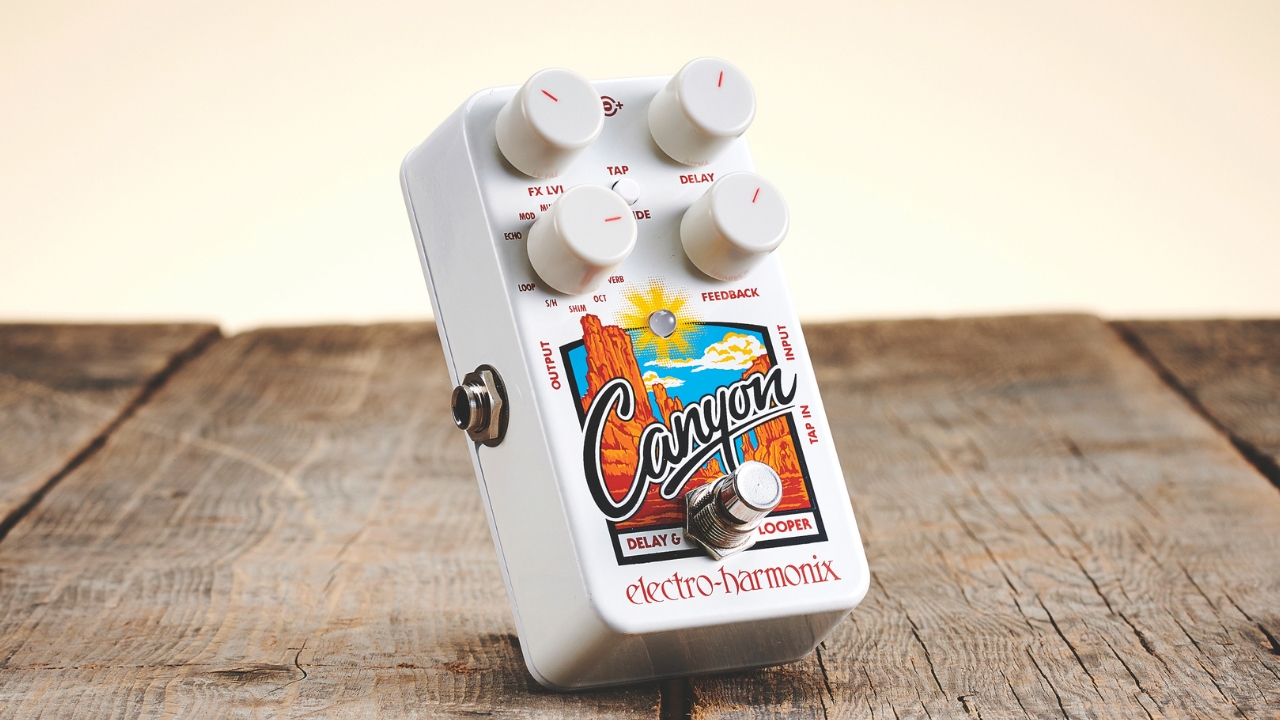
When shopping for the best delay pedal, you’ll want to consider what it is you want out of it. If you’re needing a delay sound to kick on and off now and again for certain sections of your set, or just to play around with, then a single footswitch unit with a few knobs will do just the trick.
However, some players will want a little more. Bigger and more feature-laden delay pedals have multiple footswitches – these can let you change between different preset delay settings. Some have a tap tempo switch – this lets you tap the tempo with your foot so that you can easily get the delay time you’re after, or match your delay with the bpm of the music you’re playing along to.
A delay pedal with a load of knobs on it means you’ve got the ability to really tweak and personalize the sound exactly to your liking. Some let you alter not just how many repeats you hear and how loudly, but also the tone of the delay, how it decays and more.
FAQs
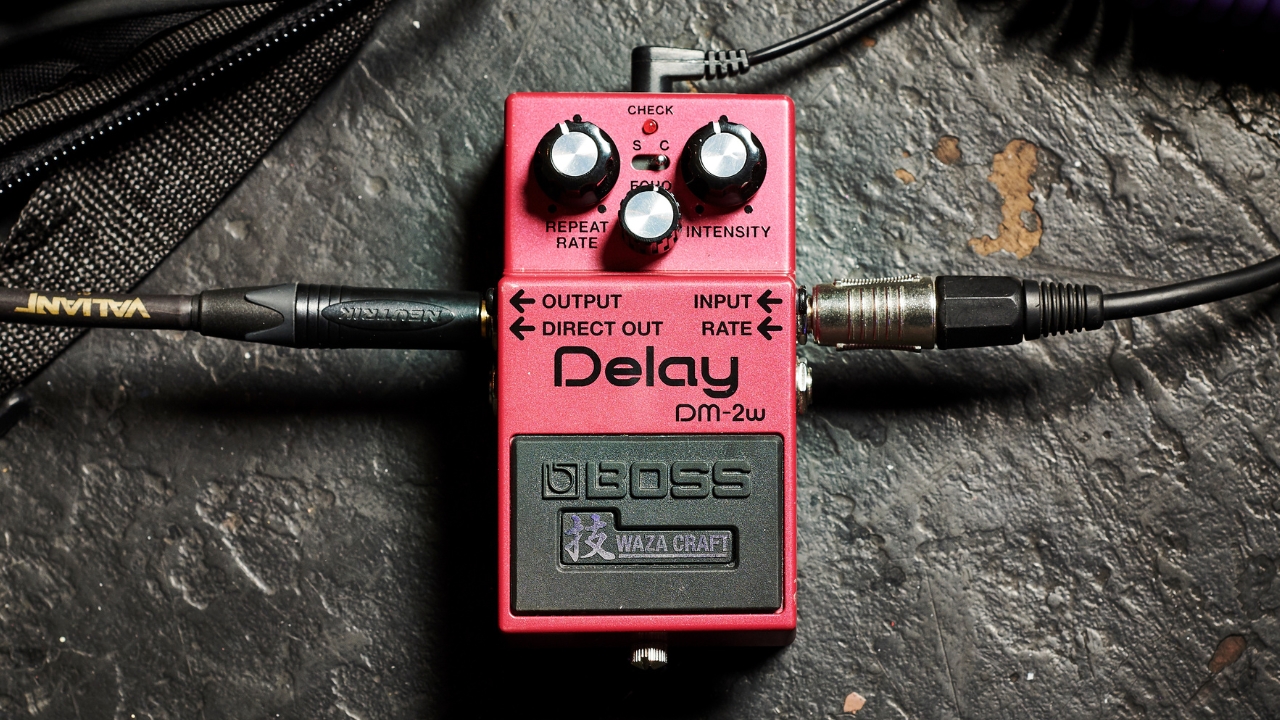
What does a delay pedal do?
A delay pedal makes a copy of the note you've played and plays it back to you. Depending on the settings of the delay pedal, it could be a quick, single repeat of the note, or endless slow repetitions of your playing.
Where should I put my delay pedal?
The general rule for pedal order is that your delay pedal should go after your drive and modulation, but before your reverb pedal. That said, there are no hard rules for pedal order so if you want to experiment with the order of things, go for it! A delay pedal before your modulation and reverb can make some interesting sounds. Similarly if you're playing more experimental music, a delay at the start of the chain can get properly crazy.
Why do I need a delay pedal?
You don't necessarily need a delay pedal, but your tone will be awfully dry without one. Using a delay pedal, particularly on lead guitar sounds adds a sense of space to your tone on medium to long settings. Similarly, you can thicken up your general guitar tone with a fast, slapback style delay.
How we test
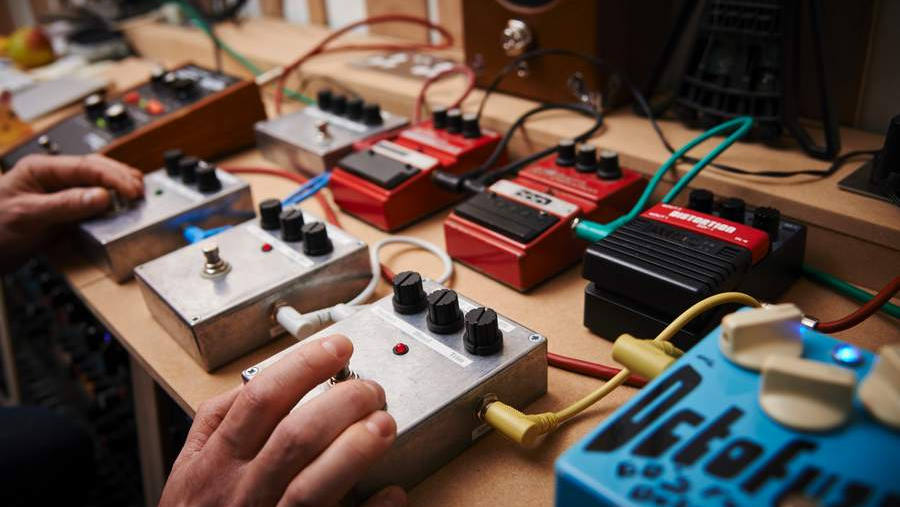
Here at Guitar World, our team of writers consists of seasoned musicians with a shared passion for all things delay. Many of us use the delay pedals on this list in our own rigs, so we bring our collective experience from live performances, studio recordings, and a genuine love for experimenting with sonic landscapes.
When it comes to selecting the best delay pedals, we delve into nuances such as delay types, versatility, build quality, and how each pedal integrates into different musical contexts. We've rigorously tested these pedals in a diverse array of sonic settings, from dialing in ambient dreamscapes to fattening up gritty rock riffs. Our recommendations go beyond the specs to ensure they meet the demands of amateur enthusiasts and professional players.
Each recommendation results from meticulous testing and a commitment to providing insights that resonate with the diverse needs of guitarists, from those diving into their first pedalboard to seasoned players seeking that next dimension of tone. The writers at Guitar World are here to be your companion in navigating the expansive world of delay pedals, helping you achieve the perfect sound for your musical journey.
Read more about how how we test products and services and how we make our recommendations.
Related buying guides
You can trust Guitar World
- Explore more sounds with the best reverb pedals for guitar
- Get creative with our pick of the best looper pedals
- Get top-notch sound with the best amps for pedals
- Expand your tone with the best impulse response loaders
- Get all wobbly with the best tremolo pedals
- 12 killer cheap guitar pedals you need to try
- The best chorus pedals for your 'board
Get The Pick Newsletter
All the latest guitar news, interviews, lessons, reviews, deals and more, direct to your inbox!
Alex Lynham is a gear obsessive who's been collecting and building modern and vintage equipment since he got his first Saturday job. Besides reviewing countless pedals for Total Guitar, he's written guides on how to build your first pedal, how to build a tube amp from a kit, and briefly went viral when he released a glitch delay pedal, the Atom Smasher.
- Matt McCrackenJunior Deals Writer
- Richard Blenkinsop
“The original Jordan Boss Tone was probably used by four out of five garage bands in the late ’60s”: Unpacking the gnarly magic of the Jordan Boss Tone – an actual guitar plug-in that delivers Dan Auerbach-approved fuzz
“This is a powerhouse of a stompbox that manages to keep things simple while offering endless inspiration”: Strymon EC-1 Single Head dTape Echo pedal review
